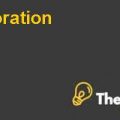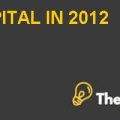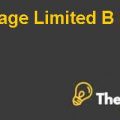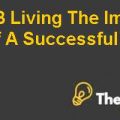
H.J. HEINZ: ESTIMATING THE COST OF CAPITAL IN UNCERTAIN TIMES
Introduction
The report presents a case about H.J. Heinz Company, a food giant, having operations around the globe, which is concerned about the uncertainty of weighted average cost of capital. HJ needs to evaluate the reasonableness of all assumptions used in WACC calculation including the rationality of projected cash flows. The report carries a detailed analysis of all assumptions used in calculating WACC.
Problem Statement
The report discusses the uncertainty of weighted average cost of capital (WACC) which may have a significant effect on the evaluation of potential performance of new products. The uncertainty occurs due to assumptions in cash flows projections, the fluctuations of interest rates, and the risk appetite of the market.
Case Analysis
The case highlights the importance of WACC, including a detailed discussion on each variable of WACC. Further, it also includes an analysis of the basic assumptions used in calculating WACC and the effect of market uncertainty on such assumptions. The report also calculates the WACC of Heinz and its other comparables.
Weighted Average Cost of Capital (WACC)
A firm derives capital from variety of sources; debt and equity, a cumulative average is required to determine the cost of total financing. So in order to facilitate this practice; WACC is calculated to discount the future probable cash flows of the company. WACC is an average rate of return that the organization’s investors require from the company.
Return to debt holders is particularly fixed whereas, return to shareholders vary and are based on management decisions because the shareholders have residual interest in the profits of the company. If the company earns more than the WACC, then it will enhance the share value whereas if the company earns less than WACC, it will diminish the share value.
In capital budgeting, the company can evaluate the feasibility of the project by discounting the projected free cash flows using WACC. If the expected cash flows exceed the cost f the project than the project will be considered as financially viable.
The report discusses the major components of WACC. The main variables are discussed below
- Market Value of Debt and Equity
- Cost of Debt and Equity
- Beta Component
- Risk Free Rate and Market Premium
- Taxation
- Cash Flow Projections
Market Value of Debt and Equity:
In calculating WACC, market value of debt and equity is considered and not the book value because we are raising finance from the market and it is useful to emphasize that the book value reflects the previous investments made by the firm but it may not be realistic in today’s context, so the calculation should focus forward rather than looking backward in historic context.
There are two major securities of H.J. Heinz which represents the major portion of company’s outstanding borrowing. Further, the company has also other source of short-term borrowings as well, so in determining WACC both the short and long-term portion of borrowings has been considered.
Although, the information provided in the case clearly suggest that the company’s securities are traded in open market but in order to facilitate better presentation, an underlying assumption has been made that the book value of the debt represents the market value of the securities. Our analysis in Appendices 1 and 2 considers both the long and short-term portion of debts from the balance sheet. On the other hand, market value of the equity has been calculated by multiplying the share price at the end of fiscal year with the outstanding shares.
Cost of Debt and Equity:
Cost of debt and equity represents the required return demanded by the debt and common shareholders on their investment and to bear specific level of risk on their investments. The discount rate used in valuation of the project should reflect the time frame of the cash flows, so an important point to consider is that whether short or long-term interest rate is used. Short-term rates are matured soon and fail to consider appropriate level of risk whereas the long-term rates are more volatile and are market sensitive.
As shown in our appendices, the cost of debt has been calculated by considering the interest expense on the outstanding debts whereas for calculating the cost of equity, Capital Asset Pricing Model (CAPM) has been adopted which states that the return is based on risk free rate and market premium after considering the risk factor..................
This is just a sample partial case solution. Please place the order on the website to order your own originally done case solution.














